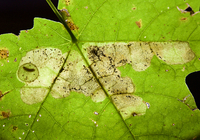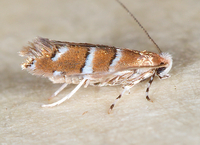
| Recorded by: Mark Basinger and Jim Petranka on 2025-10-17
Madison Co.
Comment: Acer rubrum was host plant. Blotch mine was occupied, circular industrial present.rnPhoto was taken in Erwin, Tennessee. | 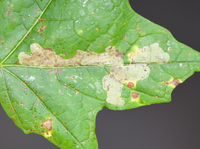
| Recorded by: Jim Petranka and Becky Elkin on 2025-10-06
Madison Co.
Comment: |
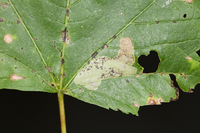
| Recorded by: Jim Petranka, Becky Elkin and Marilyn Westphal. on 2025-09-06
Henderson Co.
Comment: | 
| Recorded by: Jim Petranka, Becky Elkin, Nora Murdock, Marilyn Westphal on 2025-08-26
Rutherford Co.
Comment: |
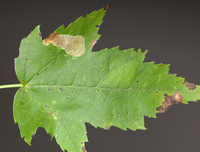
| Recorded by: Jim Petranka and Marilyn Westphal on 2025-08-18
Henderson Co.
Comment: Unoccupied mine was in Red Maple leaf. | 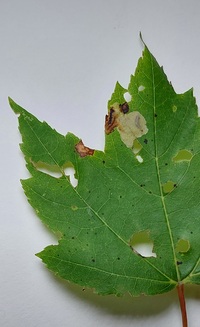
| Recorded by: Mark Basinger on 2025-08-15
Ashe Co.
Comment: |

| Recorded by: Mark Basinger on 2025-08-15
Ashe Co.
Comment: | 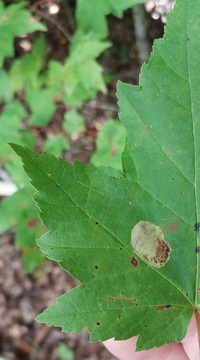
| Recorded by: Mark Basinger on 2025-08-14
Ashe Co.
Comment: |

| Recorded by: Mark Basinger on 2025-08-14
Ashe Co.
Comment: | 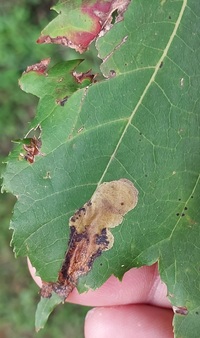
| Recorded by: Mark Basinger on 2025-08-14
Ashe Co.
Comment: |
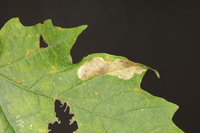
| Recorded by: Jim Petranka and Becky Elkin on 2024-08-28
Madison Co.
Comment: Occupied mine was on Sugar Maple. | 
| Recorded by: Jim Petranka on 2024-06-17
Buncombe Co.
Comment: |
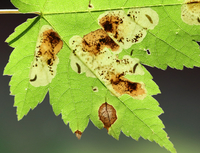
| Recorded by: Jim Petranka on 2024-06-17
Buncombe Co.
Comment: | 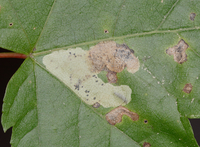
| Recorded by: Jim Petranka, Becky Elkin and Bo Sullivan on 2023-08-08
Wilkes Co.
Comment: |
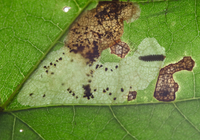
| Recorded by: Jim Petranka, Becky Elkin and Bo Sullivan on 2023-08-08
Wilkes Co.
Comment: | 
| Recorded by: David George, Stephen Dunn, Jeff Niznik, Rich Teper, Becky Watkins on 2023-07-29
Swain Co.
Comment: |
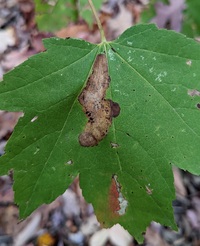
| Recorded by: Jeff Niznik on 2022-11-06
Orange Co.
Comment: | 
| Recorded by: Jeff Niznik on 2022-11-06
Orange Co.
Comment: |
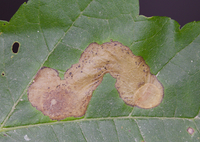
| Recorded by: Jim Petranka and Becky Elkin on 2022-10-24
McDowell Co.
Comment: Occupied mines with niduses were on Red Maple. | 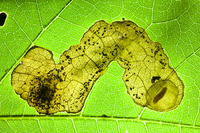
| Recorded by: Jim Petranka and Becky Elkin on 2022-10-24
McDowell Co.
Comment: A backlit image on Red Maple with a nidus. |
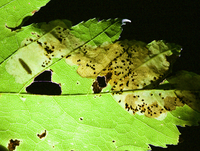
| Recorded by: Jim Petranka on 2022-10-09
Buncombe Co.
Comment: | 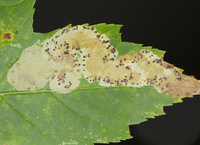
| Recorded by: Jim Petranka and Becky Elkin on 2022-10-04
Transylvania Co.
Comment: |
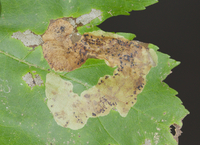
| Recorded by: Jim Petranka and Becky Elkin on 2022-09-15
Caldwell Co.
Comment: | 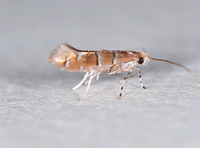
| Recorded by: Jim Petranka on 2022-07-29
Buncombe Co.
Comment: |
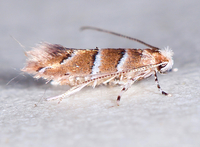
| Recorded by: Jim Petranka on 2022-07-23
Buncombe Co.
Comment: An adult that was reared from Red Maple; mine on July 7; adult emerged on July 23, 2022 (see companion photo of the mine). | 
| Recorded by: Jim Petranka on 2022-07-15
Buncombe Co.
Comment: |
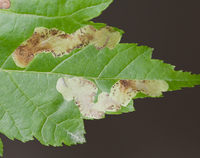
| Recorded by: Jim Petranka on 2022-07-07
Buncombe Co.
Comment: Occupied mines were on Red Maple. | 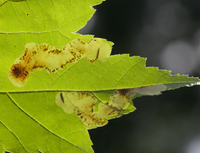
| Recorded by: Jim Petranka on 2022-07-07
Buncombe Co.
Comment: Occupied mines were on Red Maple. |
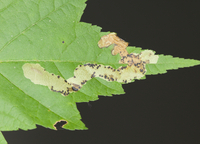
| Recorded by: Jim Petranka on 2022-06-17
Madison Co.
Comment: Occupied mine was on Red Maple. | 
| Recorded by: Jim Petranka on 2022-06-17
Madison Co.
Comment: |
|

 »
»
